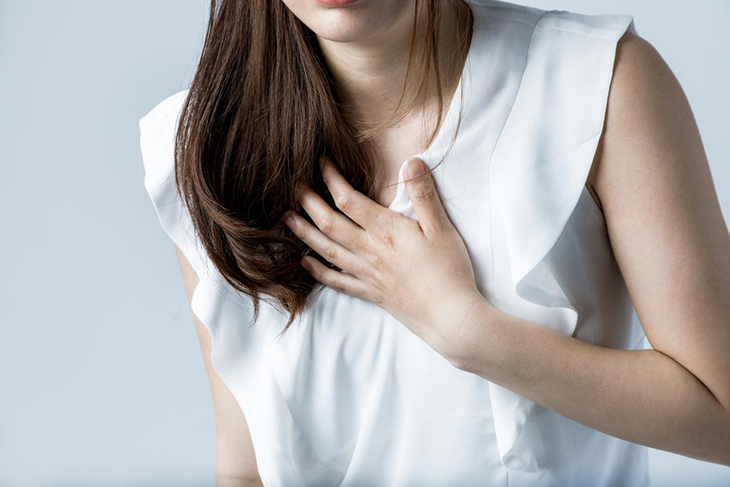
Cardiac arrest, a condition characterized by the cessation of the heart, often occurs suddenly without warning. As a result, less than 12 percent of individuals survive this traumatic event, explains the American Heart Association (AHA).
However, when warning signs are recognized and prompt action is taken, the likelihood of surviving improves. According to the Mayo Clinic, there are recognized advance symptoms of cardiac arrest, such as chest discomfort, shortness of breath, weakness, and rapid or irregular heartbeat.
A recent study from scientists at the Schmidt Heart Institute at Cedars-Sinai Hospital not only validates many of these warning signs but also underscores that the predominant symptoms experienced 24 hours before the heart function loss differ between women and men.
Published in Lancet Digital Health, the research reveals that men who experienced cardiac arrest were more likely to have chest pain, while women were more prone to shortness of breath.
Warning Signs of Cardiac Arrest Not Evident for All
Notably, the study found that only half of those who underwent cardiac arrest exhibited a discernible symptom.
Study leader Sumeet Chugh, MD, a cardiologist with Cedars-Sinai in Los Angeles, said, “What we found was 50 percent of men and 50 percent of women had warning symptoms of their cardiac arrest. Most people blow off these symptoms — only about 20 percent of those who have symptoms call 911, but that 20 percent have a sixfold greater chance of living compared to those who don’t.”
Dr. Chugh and his teammates found that smaller subgroups of both genders reported palpitations, seizure-like activity, and flu-like symptoms.
The research involved around 800 adults aged 18 to 85, identified from emergency medical services (EMS) reports, who experienced sudden cardiac arrest witnessed by a bystander of EMS personnel between February 1, 2015, and January 31, 2021. Approximately half of them exhibited at least one symptom in the 24 hours preceding their cardiac arrest.
In comparison, data from 1,171 patients in a control group attended to by EMS for similar symptoms but without cardiac arrest were analyzed by the research team. These findings align with previous research demonstrating gender differences in how men and women experience heart problems.
Discoveries Reinforce Earlier Research on Indicators of Cardiac Arrest
A cardiologist in South Burlington, Vermont, Sherrie Khadnanga, MD, and a member of the American College of Cardiology Prevention of Cardiovascular Disease Council, said that these findings support previous research showing that men and women experience heart problems differently.
In a scientific paper published in 2016 in the Annals of Internal Medicine looked at 839 sudden cardiac arrest patients, which found that men had more symptoms of chest pain, whereas women had more symptoms of dyspnea, or shortness of breath.
“Women often report their symptoms as chest discomfort, tightness, heaviness, and don’t necessarily describe it as ‘chest pain,’” says Dr. Khadnanga, who was not involved with the research.
Action Needed When Warning Signs Appear
According to the study authors, they symptoms are hard to interpret when taken on their own.
An associate professor of internal medicine UT Southwestern Medical Center in Dallas, Ambarish Pandey, MD, who specializes in preventive cardiology and heart failure, specifies that these symptoms in isolation are not necessarily specific to just cardiac arrest and may also indicative of other illnesses.
Dr. Pandey, who has published research on gender-based differences in outcomes in cardiac arrest patients said, “If you’re in the ER, the number of patients with shortness of breath and chest pain could be high, but the proportion of those who end up having cardiac arrest is going to be exceedingly low, so it becomes a very difficult symptom to act upon.”
Regardless of what is causing these symptoms, patients should take them seriously.
“People who are experiencing chest pain or sudden shortness of breath should seek medical attention,” says Sarah Perman, MD, an associate professor of emergency medicine at the University of Colorado School of Medicine in Aurora and a member of the Sudden Cardiac Arrest Foundation Advisory Council.
Pavitra Kotini-Shah, MD, an assistant professor of emergency medicine at the University of Illinois Chicagoexplained that recognizing these symptoms, and others, of cardiac arrest, and getting immediate medical help is what will make the difference between life and death.
Notably, Dr. Kotini-Shah leads a cardiac arrest survivors group, explaining how one of the survivors actually developed GI symptoms very similar to severe heartburn.
She says, “She was hesitant to call for help, but her son did anyway and after EMS arrived, the patient went into a cardiac arrest. But because EMS was there, they rendered timely, effective CPR and shocked her. As a result, she is alive, well, and essentially back to her baseline.”
More Research Required on Prevention of Cardiac Arrest
Led by Dr. Chugh, the study authors explain that there is difficulty in interpreting these symptoms in isolation, and are therefore exploring how gender specific warning symptoms may show themselves in patients with distinct clinical profiles.
He says, “For example, what if a person is diabetic? What if a person has already had a heart attack in the past? What if somebody has high blood pressure? If we combine these clinical profile features with the warning symptoms will that make prediction of cardiac arrest better?”
Additionally, they are investigating how this knowledge can be integrated with personal technology to enhance cardiac arrest detection.
“What if we took some of the signals from wearables [health and fitness trackers] and combined them both with the symptoms and the clinical profile? Could we then do a much better job at predicting imminent cardiac arrest?” he says.



